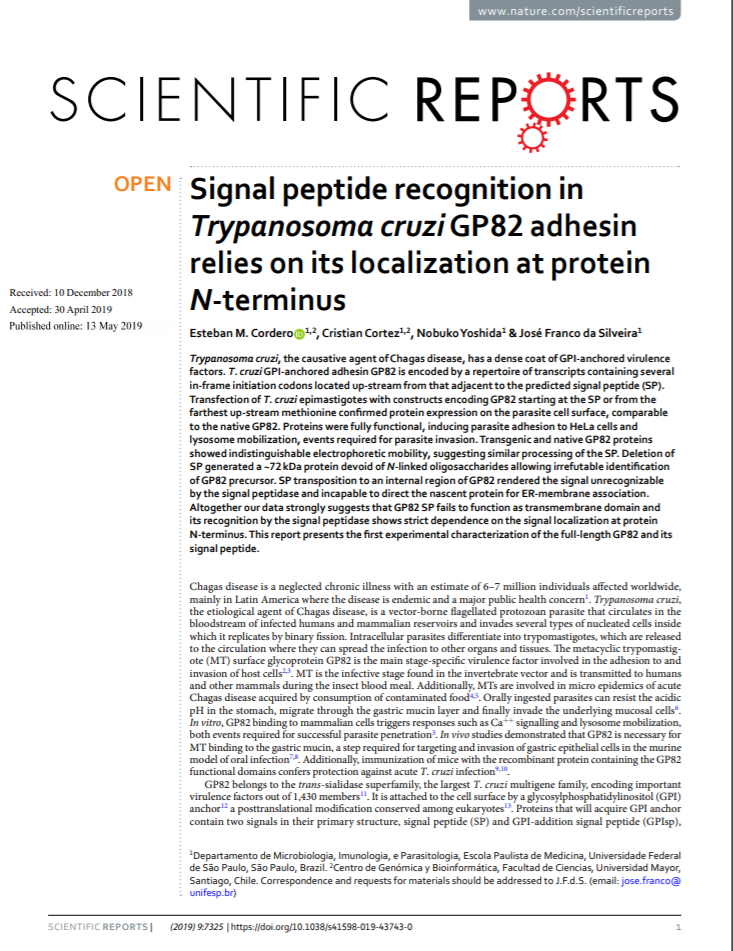Signal peptide recognition in Trypanosoma cruzi GP82 adhesin relies on its localization at protein N-terminus

Fecha
2019Autor
Cortez, Cristián [Univ Mayor, Fac Ciencias, Ctr Genom & Bioinformat, Santiago, Chile]
Cordero, Esteban M. [Univ Mayor, Fac Ciencias, Ctr Genom & Bioinformat, Santiago, Chile]
Yoshida, Nobuko
da Silveira, JoséFranco
Ubicación geográfica
Notas
HERRAMIENTAS
Acceda a títulos restringidos
¿Cómo descargar?Resumen
Trypanosoma cruzi, the causative agent of Chagas disease, has a dense coat of GPI-anchored virulence factors. T. cruzi GPI-anchored adhesin GP82 is encoded by a repertoire of transcripts containing several in-frame initiation codons located up-stream from that adjacent to the predicted signal peptide (SP). Transfection of T. cruzi epimastigotes with constructs encoding GP82 starting at the SP or from the farthest up-stream methionine confirmed protein expression on the parasite cell surface, comparable to the native GP82. Proteins were fully functional, inducing parasite adhesion to HeLa cells and lysosome mobilization, events required for parasite invasion. Transgenic and native GP82 proteins showed indistinguishable electrophoretic mobility, suggesting similar processing of the SP. Deletion of SP generated a similar to 72 kDa protein devoid of N-linked oligosaccharides allowing irrefutable identification of GP82 precursor. SP transposition to an internal region of GP82 rendered the signal unrecognizable by the signal peptidase and incapable to direct the nascent protein for ER-membrane association. Altogether our data strongly suggests that GP82 SP fails to function as transmembrane domain and its recognition by the signal peptidase shows strict dependence on the signal localization at protein N-terminus. This report presents the first experimental characterization of the full-length GP82 and its signal peptide.
Coleccion/es a la/s que pertenece:
Si usted es autor(a) de este documento y NO desea que su publicación tenga acceso público en este repositorio, por favor complete el formulario aquí.